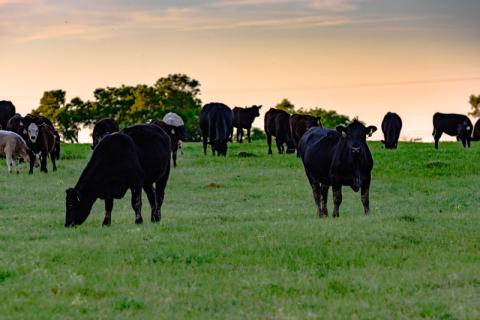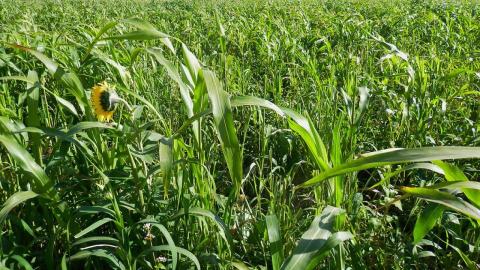Nebraska Grazing Conference on Aug. 9-10
July 6, 2022
This year’s program will feature topics of grazing lands conservation, invasive species management, grazing systems and wildlife management.
Pasture and Forage Minute: Considerations for Cutting Hay, Controlling Bluegrass
June 28, 2022
Extension educators discuss some often overlooked factors for determining a grass hay cut date, and share recommendations on timing irrigation for more effective control of bluegrass in alfalfa.
Weighing Risk and Reward of Annual Forages
June 23, 2022
An influx of prevented plant acres provides freedom for producers to grow annual cover crops to counterbalance current forage prices.
Pasture and Forage Minute: Rain and Hail Damage, Preventing Window Disease
June 20, 2022
Extension insights on reducing rain damage to hay, assessing hail damage to forage crops, and preventing window disease in alfalfa.
Pasture and Forage Minute: Toxic Plants, Managing First-Year Alfalfa
June 14, 2022
Tips for identifying and managing poisonous plants in cattle and equine grazing pastures, and harvest guidelines for getting the most from first-year alfalfa.
Insurance for Annual Forages Sign-up Deadline is July 15
June 6, 2022
Nebraska producers who are considering planting annual forages on cropland this year can mitigate risk by utilizing USDA's Annual Forage Insurance Plan.
Pasture and Forage Minute: Selecting the Right Herbicide, Irrigating Alfalfa and Poison Hemlock
June 6, 2022
Tips on selecting the right herbicide for your operation, overcoming challenges to irrigating alfalfa and poison hemlock management.
Pasture and Forage Minute: Controlling Leafy Spurge, Timing Grass Hay Harvest
June 1, 2022
Extension educators share tips on determining water needs for cattle, options for controlling leafy spurge, and a grass hay harvest timeline.







